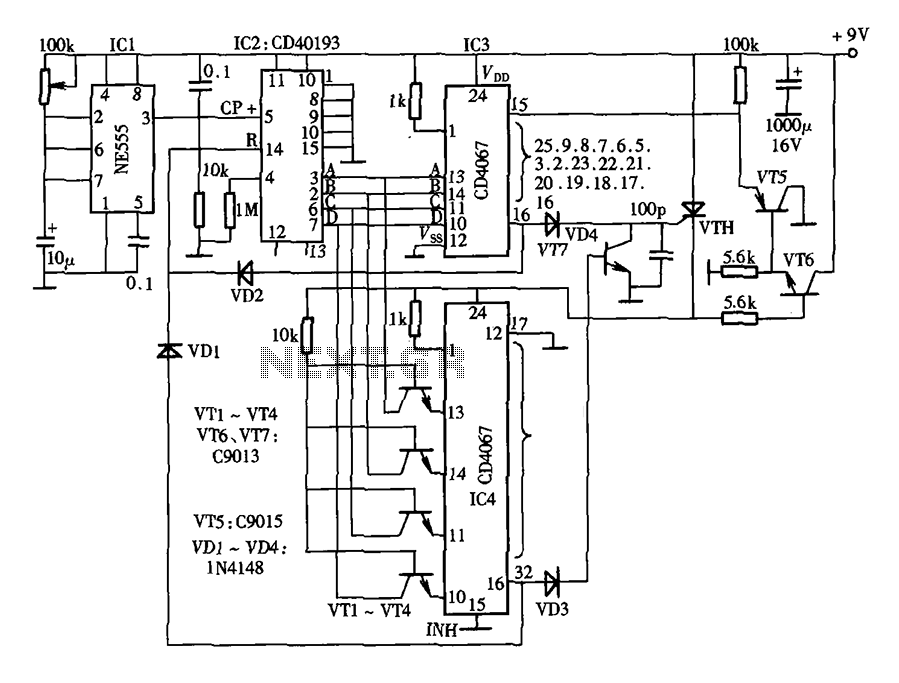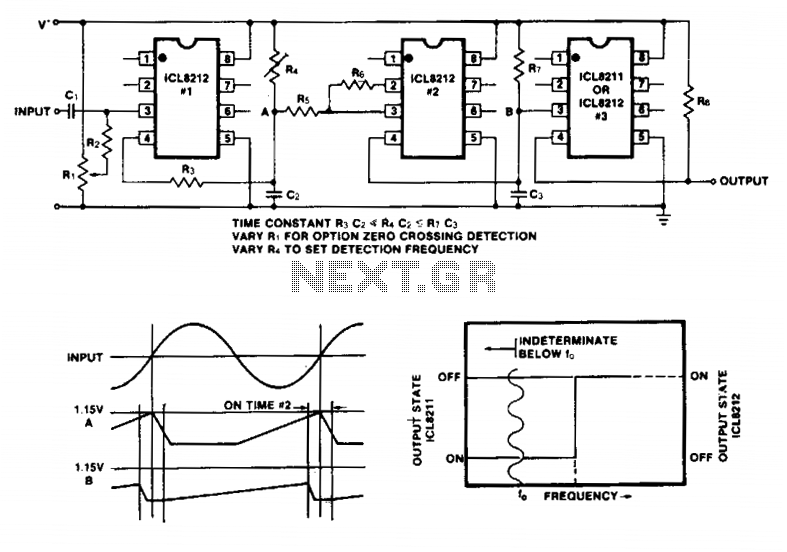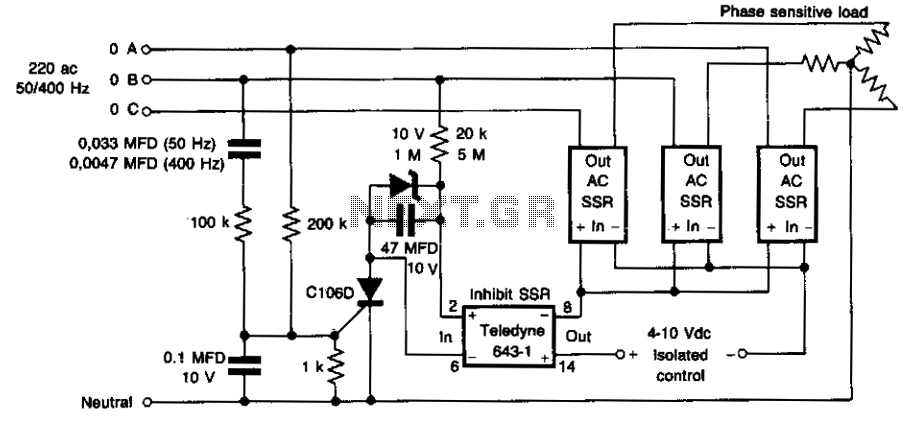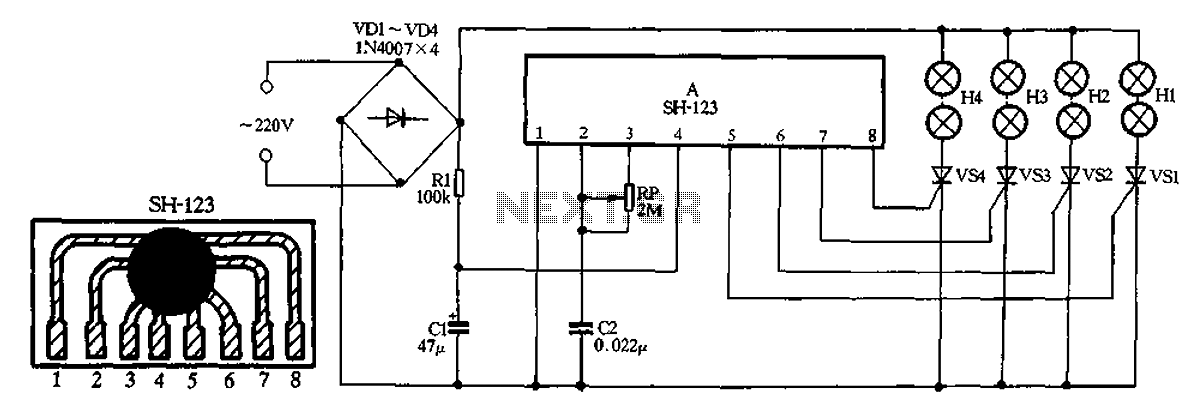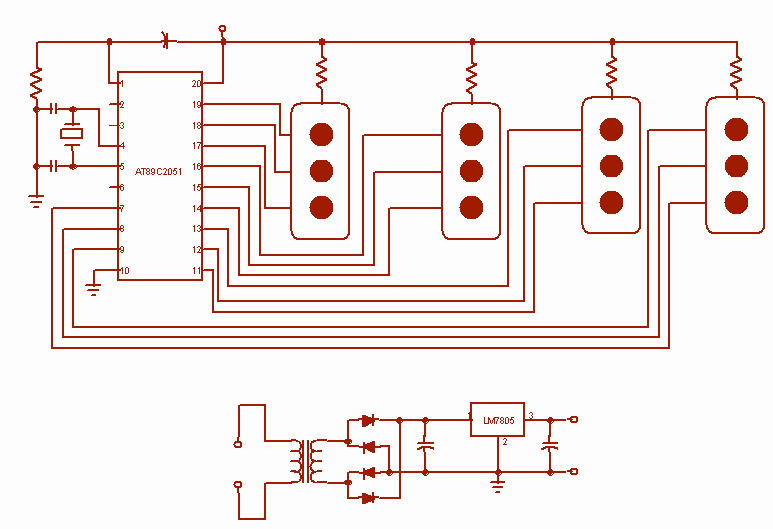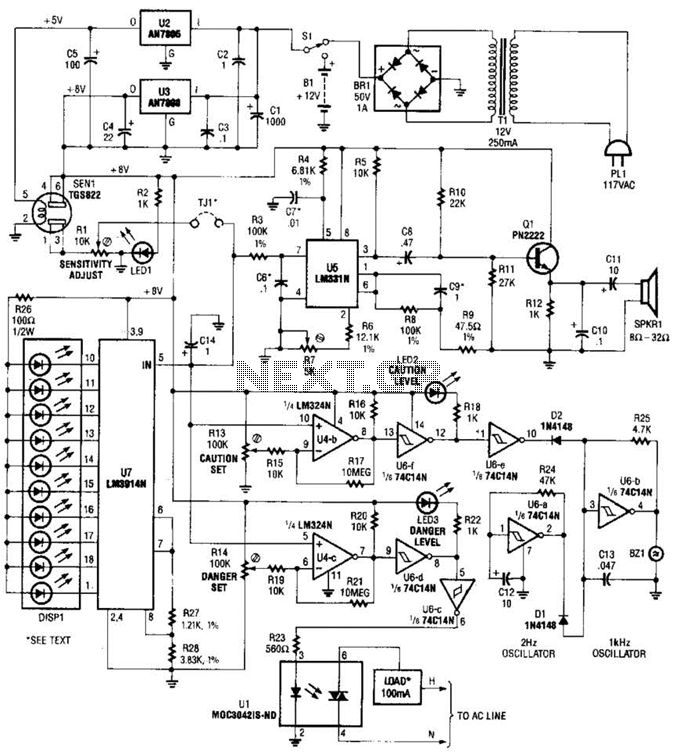
Light interruption detector
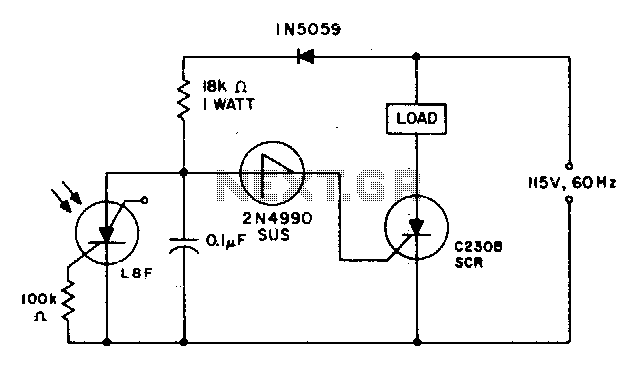
When the light incident on the LASCR is interrupted, the voltage at the anode of the 2N4990 unilateral switch becomes positive during the subsequent positive cycle of the power supply. This action triggers the switch and the C230 SCR once the switching voltage of the unilateral switch is attained. Consequently, the load will be energized for as long as light is not incident on the LASCR.
In this circuit, the operation hinges on the light-sensitive characteristics of the LASCR (Light Activated Silicon Controlled Rectifier). The LASCR is designed to conduct when exposed to light, allowing current to flow through it. When the light source is interrupted, the LASCR will cease to conduct, resulting in a voltage change at its anode. This voltage change is critical as it influences the behavior of the 2N4990 unilateral switch.
The 2N4990 acts as a trigger mechanism within the circuit. Once the light is interrupted, the anode voltage rises during the next positive half-cycle of the AC power supply. This rise in voltage is essential for activating the unilateral switch, which is a device that allows current to flow in one direction only when a specific voltage threshold is met. When the voltage at the anode reaches this threshold, the unilateral switch closes, allowing current to flow to the C230 SCR (Silicon Controlled Rectifier).
The C230 SCR is a key component in controlling the power delivered to the load. Once triggered, the SCR remains in a conducting state until the current through it drops below a certain level, or it is turned off by other means. In this configuration, the load remains energized as long as the light does not reach the LASCR. Therefore, the circuit effectively creates a light-sensitive control mechanism, where the presence or absence of light directly influences the operation of the load. This application is particularly useful in scenarios such as automatic lighting systems, where the load should only be active in the absence of ambient light.When the light incident on the LASCR is interrupted, the voltage at the anode to the 2N4990 unilateral switch goes positive on the next positive cycle of the power which in turn triggers the switch and the C230 SCR when the switching voltage of the unilateral switch is reached This will cause the load to be energized for as long as light is not incident on the LASCR. 🔗 External reference
In this circuit, the operation hinges on the light-sensitive characteristics of the LASCR (Light Activated Silicon Controlled Rectifier). The LASCR is designed to conduct when exposed to light, allowing current to flow through it. When the light source is interrupted, the LASCR will cease to conduct, resulting in a voltage change at its anode. This voltage change is critical as it influences the behavior of the 2N4990 unilateral switch.
The 2N4990 acts as a trigger mechanism within the circuit. Once the light is interrupted, the anode voltage rises during the next positive half-cycle of the AC power supply. This rise in voltage is essential for activating the unilateral switch, which is a device that allows current to flow in one direction only when a specific voltage threshold is met. When the voltage at the anode reaches this threshold, the unilateral switch closes, allowing current to flow to the C230 SCR (Silicon Controlled Rectifier).
The C230 SCR is a key component in controlling the power delivered to the load. Once triggered, the SCR remains in a conducting state until the current through it drops below a certain level, or it is turned off by other means. In this configuration, the load remains energized as long as the light does not reach the LASCR. Therefore, the circuit effectively creates a light-sensitive control mechanism, where the presence or absence of light directly influences the operation of the load. This application is particularly useful in scenarios such as automatic lighting systems, where the load should only be active in the absence of ambient light.When the light incident on the LASCR is interrupted, the voltage at the anode to the 2N4990 unilateral switch goes positive on the next positive cycle of the power which in turn triggers the switch and the C230 SCR when the switching voltage of the unilateral switch is reached This will cause the load to be energized for as long as light is not incident on the LASCR. 🔗 External reference
